Reverse Engineering the V86P PSU (Part 1)
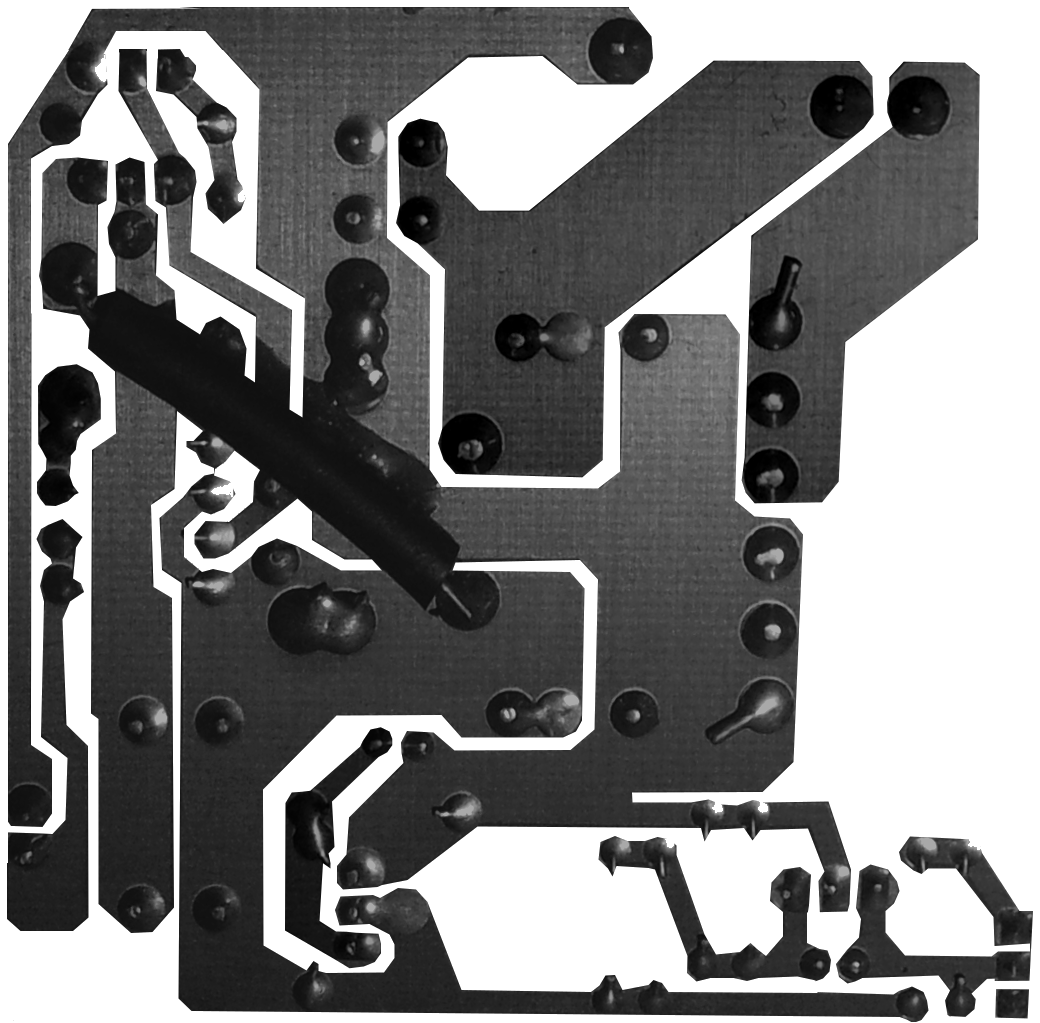
My V86P did not come with a PSU - this makes things all sorts of interesting. Whilst 8.5V isn't hard to get from a bench supply, it's not a particularly common voltage for off the shelf PSUs, especially not at 4A (which is what the original unit is rated for). To top things off, I've suspected for a while that a good chunk of the NiCd charging circuitry is inside the PSU, rather than than the laptop itself, but precisely how much I didn't know. I started with a few simple tests with an ohmmeter between the various power input pins, and was able to confirm that two pins on the 6-pin PSU connector are connected to Gnd, two pins are connected together (I know from the actsirius1.co.uk site that these are the main 8.5V in), the pin immediately above these connects directly through to the positive pin of the NiCd battery pack, and the last pin is an unknown. The PSU connector is located on a separate PCB under the motherboard, inside a metal housing that makes up half of the battery compartment. A short cable protrudes from this housing which connects to a 6-pin header on the motherboard, and a pin just above the power switch. There's also a separate wire that goes to a ring loop which goes through one of the motherboard screws - presumably chassis ground.
The JVC 26-pin Hard Disk Interface (Part 1)
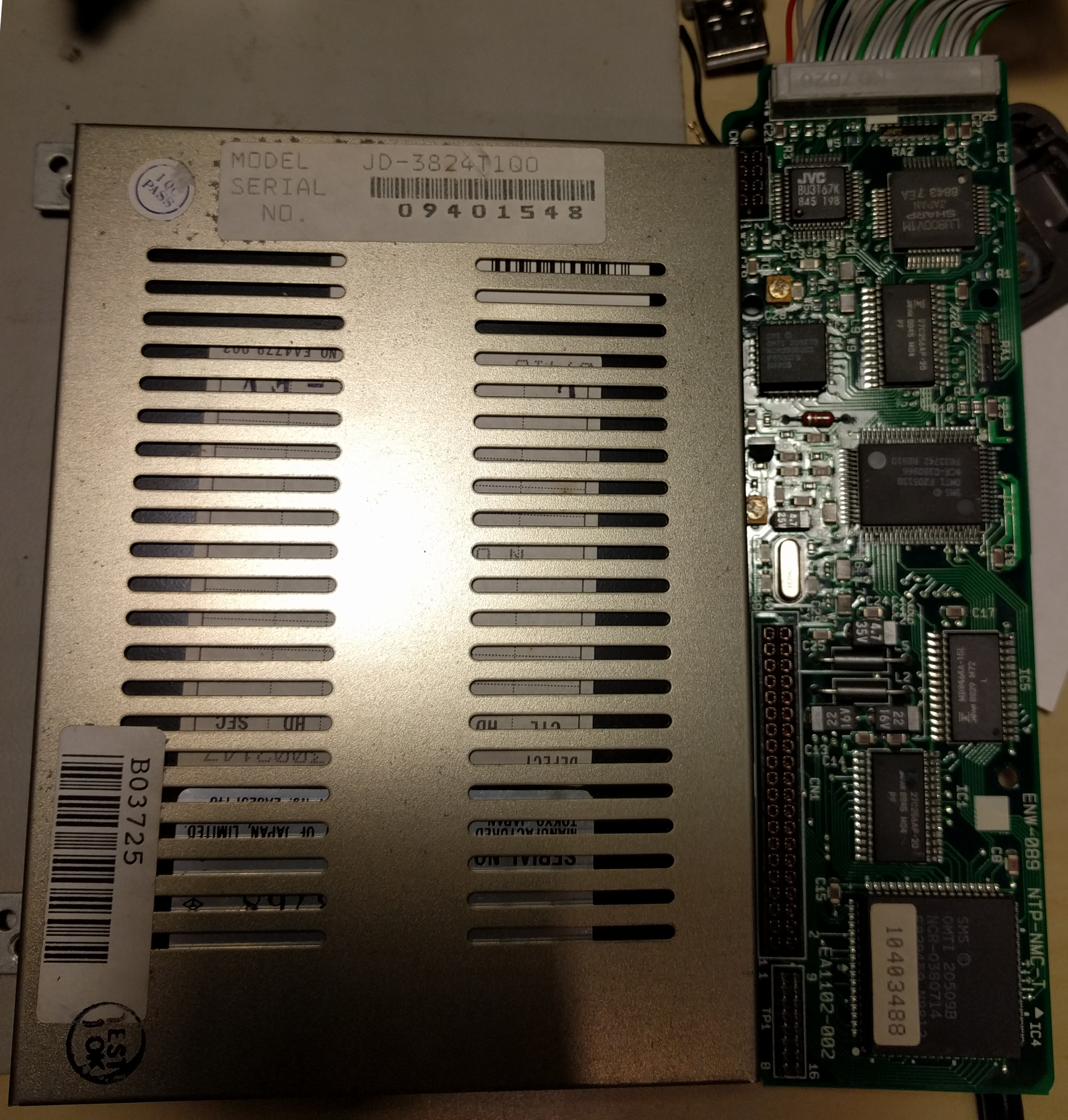
As I've mentioned in a previous post, my V86P is the higher-spec model containing a 20MB hard disk. Back in the mid to late 1980s, IDE was still relatively new and most systems were still using ST-506 interface drives, albeit using RLL rather than MFM to increase data rate and capacity. For example, I remember the Viglen Vig II 16MHz 286 we bought as our family PC back in '88(or so) had a 40MB RLL drive. Laptop form-factor systems were also relatively recent, with the floppy-based Toshiba T1100 being released in 1985 and the hard-disk enabled T1200 in 1987. Obiviously desktop drives of the era weren't ideally suited to laptop use, at that time 5.25" half-height was the dominant form-factor. The ST-506 interface also required two separate cables connecting the drive to the controller: a 34-pin control cable on which drives could be daisychained, and a 20-pin data cable from each drive directly back to the controller. These connectors alone take up almost 3.5" of space along the edge of the HDD logic board, and that still leaves power, which makes developing an alternate interface fairly logical.
Getting things running
As I mentioned in my previous post, my friend Chris over in the UK was able to aquire a Victor V86P laptop, and very generously sent it on to me. The V86P is an IBM PC XT compatible laptop, released in 1989 by Victor Technologies. Quite a neat little unit, they had the following specs:
- 80C86 CPU running at 10MHz (with 4.77MHz available as a keyboard shortcut)
- 512k or 1MB RAM
- Either 1x 720k FDD and 1x 20MB HDD
Or 2x 720k FDDs - CGA graphics, capable of driving either the LCD panel or an external display
- Monochrome LCD display (no backlight)
- 1800mAh 6V NiCd battery pack
- CMOS BIOS configuration storage, backed by supercapacitor
- Real Time Clock
- 1x Parallel Port
- 2x Serial Ports (16450 UART)
- Expansion bus connector
What’s that? It’s Retrochallenge time again?

I'm sure pretty much everyone in the retrocomputing world would agree when I say that nostalgia is a major driving force in the hobby. Everyone has their own stories about the systems in their collection: maybe it was their first computer, maybe it was the system they had at school, maybe it's something they drooled over at the time but weren't able to get. For Retrochallenge 2017/04, I thought it would be good to have a trip back to revisit one of the systems I regretted selling when I was a teenager and subsequent adventures with a replacement.
Sorry? I can’t hear you!

The original ZX Spectrum was typically connected to a portable audio cassette recorder to load and save programs. Later on, Sinclair released the Interface 1 with the Microdrive, a miniature tape interface that wasn't the most reliable (possibly a post on this at some point in the future). Several third party vendors released disk interfaces with varying degrees of popularity. For the most part though, tape was the the format software came on.
As time progressed, and every other system was already using disks (or so it seemed), Amstrad decided to try and breathe some new life into the Spectrum by releasing the +3, with its built in disk drive. Possibly too little too late, and probably not helped by their choice of format, the +3 was the last of the Spectrum line.
Adding composite video out to the +3
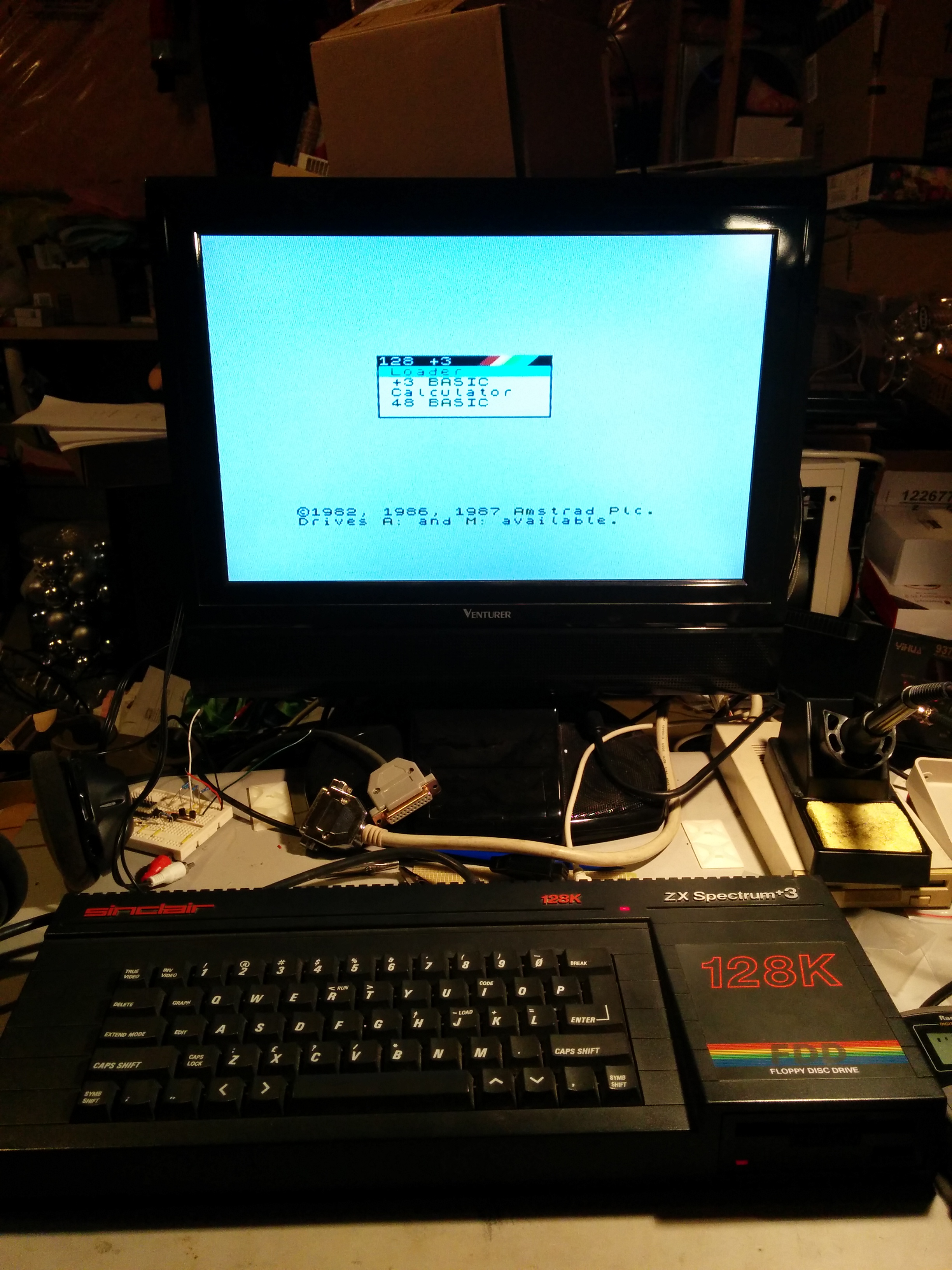
Now I have a working power supply for the Spectrum +3, I need some way to see what's being output. In its original configuration, video is output either a PAL RF signal on UHF channel 36 (UHF 36 was used a lot like VHF 3/4 in north america) or as RGB on the Peritel socket. The RGB signal doesn't help much here - whilst in the UK, TVs have a SCART socket with RGB inputs, in north america, TVs have YCbCr component inputs, so some circuitry to do conversion is required. That being said, the RF signal is generated from a composite signal - in earlier model Spectrums, it's just a matter of disconnecting the input to the modulator, disconnecting the output of the modulator from the socket, and connecting the input to the socket. Unfortunately, with the later model Spectrums, Amstrad mixed in the audio (as an FM signal), and that tends to upset TVs when you include it on the composite video input.
Replacing the ZX Spectrum +3 PSU

Seeing as the A1200 PSU replacement went so well, it was time to have a go at the ZX Spectrum +3. Much like the A1200, this also requires +5, +12, and -12V rails, with a similar sized casing (slightly wider and shorter). The original PSU was linear with a big, heavy, transformer - not ideal when you're trying to keep weight down for shipping. As a result, I'd already opened up the case and removed the existing supply before shipping the system. What I had in front of me was an empty shell.
A timely reminder
We all make regular backups, right? These days, it's easy to setup something largely fire and forget - things like crashplan, backuppc, timemachine, etc. What about our older systems? Making a working copy of your disks used to be standard practice; likewise saving your important files to more than one disk. How about backing up hard disk based systems? Sure, there was software out there to backup everything, but unless you had a tape drive you needed to use a lot of floppies. I remember backing up my Commodore A590 wasn't too bad - it was only a 20MB disk, and writing out to 880kb floppies meant you only needed 15-20 disks. When I got my A1200 with it's massive 60MB disk, I don't recall if I ever did a full backup - after all, I had all the programs on floppy, and I had my data backed up on floppy. Even if I had a backup from the last time it was in use, it wasn't in amongst all the disks I brought over with it. Nor, it seems, were any of my workbench disks. I'm sure you can see where this is leading.
Replacing the A1200 PSU
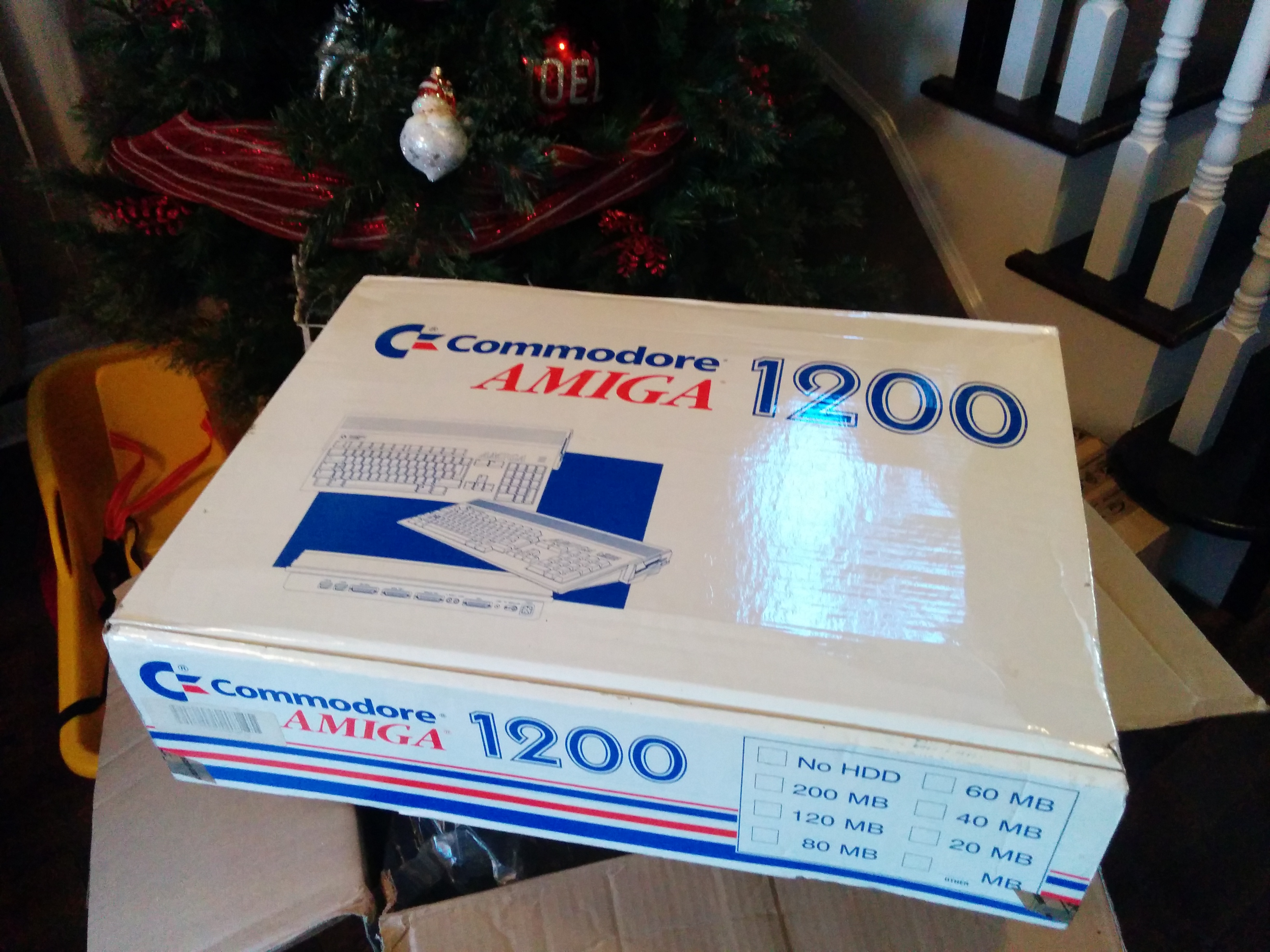
So January has rolled around and all my stuff from the UK is still sitting in the basement untouched. January is Retrochallenge time - I had intended on working on my 48k Spectrums, but I don't think that's going to happen for a while yet. However - getting my A1200 and +³ up and running seems like a good start.
My A1200 was purchased, second-hand, for a friend at highschool as a replacement for my much loved A500, which by the mid-90s was getting a little long in the tooth. The A1200 represented quite the upgrade, going from a 68000 to a 68EC020 and it had a massive 60MB hard disk (compared to the 20MB I had in my A590). If memory serves, it set me back £60 - which without a job is rather a lot. It was my main machine for a while, before I got my first IBM PC (we had a family PC for quite some time), but that's a story for another post.
Unpacking the big box of goodies
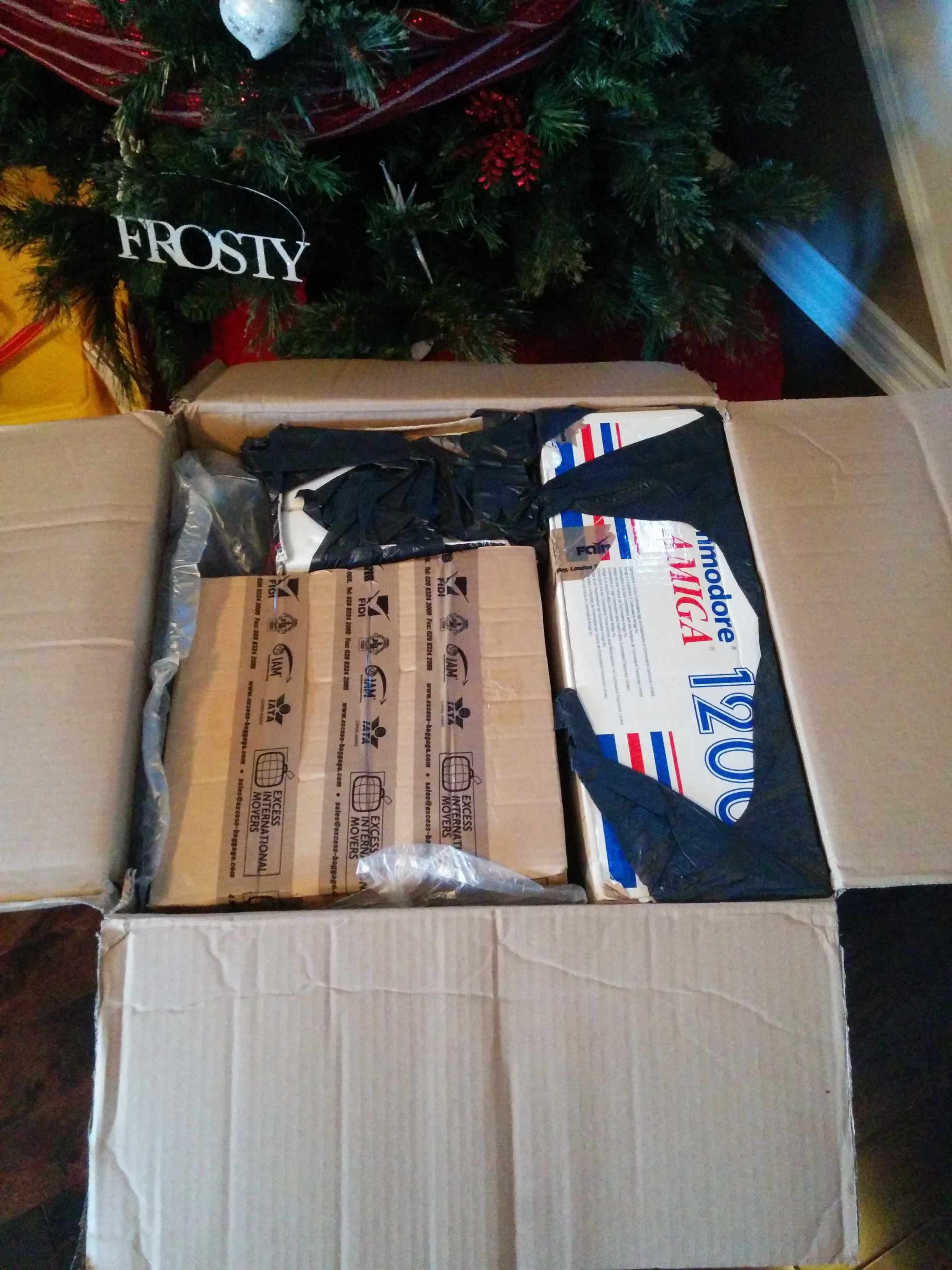
Twas the day before Christmas and all through the house... Ok, maybe not - but it was Christmas Eve when the movers appeared with my big box of toys. As you can see, it didn't quite fit under the tree 🙂 With family descending on us the following day, I thought it would be a good idea to unpack it, take it downstairs, and snap a few photos in the process.